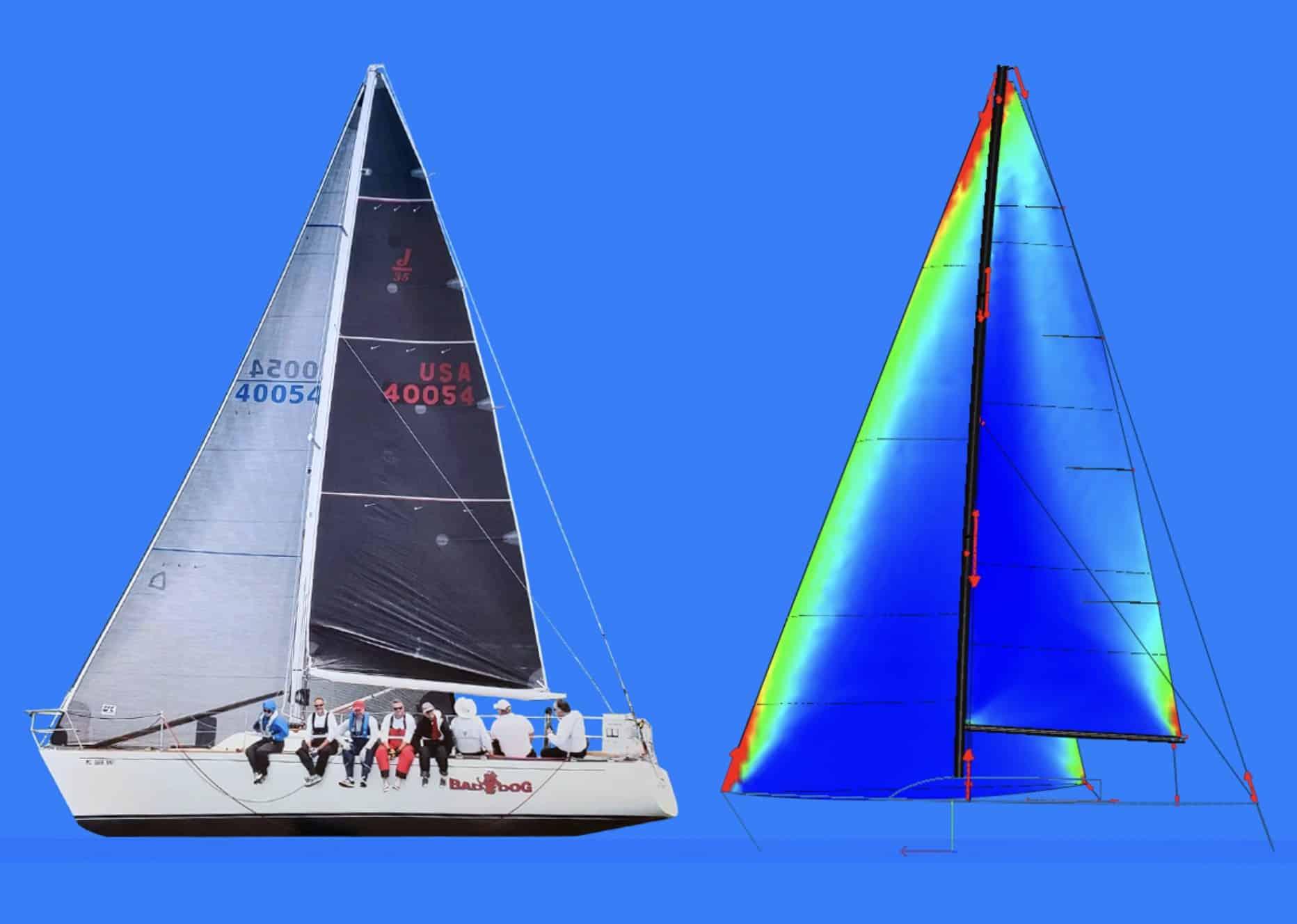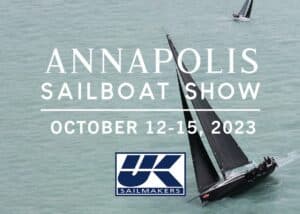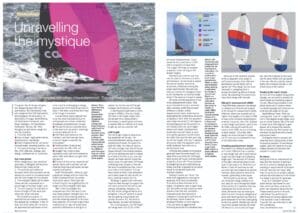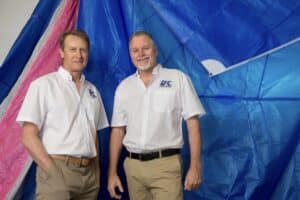Understanding the racing venue can be one of the most significant advantages for a sailor. Home game advantage exists in any sport, but where a field, court or rink might have distinct differences, there are considerably more variables at play for sailors. The venue is much larger than any arena, and impacted by the local geography, weather patterns, tide and currents. FSI (Fluid–Structure Interaction) analysis is a tool that Pat Considine, lead designer at UK Sailmakers Chicago, uses to optimize new sails for performance, based on where and how a boat is sailed.
Lake Muskegon is a small inland lake located in Western Michigan off the eastern shore of Lake Michigan. Pat was in the area for a few deliveries for UK Sailmakers Chicago and was invited to hop aboard J/35 BAD DOG for a Wednesday night club race. Pat knew the owner, Larry Taunt, a long time UK Sailmakers Chicago customer, but had not previously met the rest of the crew. The last time Pat had sailed with the BAD DOG team was back in 2018, when they bought their current UK Sailmakers X-Drive main and jib.
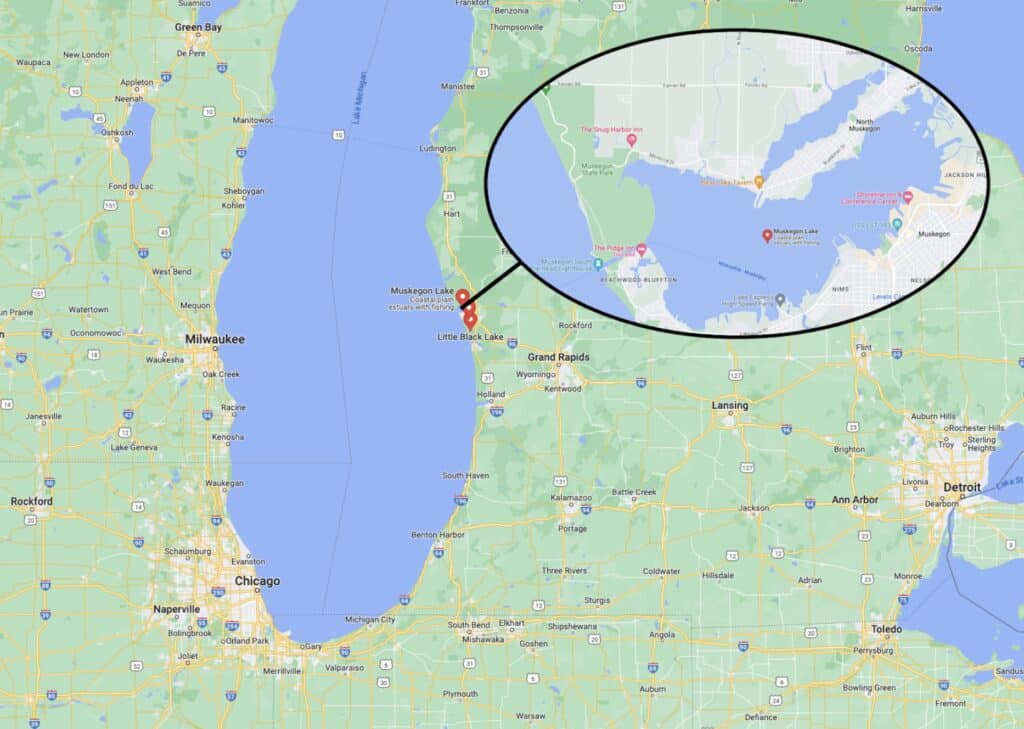
Lake Muskegon is a small inland lake located in Western Michigan off the eastern shore of Lake Michigan.
“Right away, I could tell these are a fun group of guys.” Pat said. “They’re having all the usual banter before the race, you know…Why is the line so long? These instruments don’t work at all, the typical stuff,” he laughed. “We start the race and initially, I’m just trying to stay out of the way. We’re tacking and the jib comes in—snap!—right where it’s supposed to be, and after a couple of tacks I realize these guys are really good!” Pat said, “The second beat came along, and it was blowing about eight knots. I decided to spill the beans to the crew, and start chiming in about how they have everything set up.”
Pat noticed that the backstay was on hard, making the headstay really straight and flattening the entry of the jib. Although this goes against the usual setup that Pat would have suggested, he noticed that BAD DOG was making great VMG (Velocity Made Good), in a high and slow mode. This turned out to be optimal for the conditions and their venue, an inland lake with no waves. They also trimmed the main very hard with almost no leech twist, which also works well on flat water. The team had Muskegon Lake cased, and knew how to maximize their performance in these conditions using an atypical configuration.
When Larry expressed interest in ordering some new sails, Pat was excited to use the FSI simulation to tweak the current designs to suit the way they sail, and make some performance gains. FSI allows for a huge variety of inputs, and Pat plugged in the boat’s specs including the bend properties of the aluminum mast and rig tuning. He set up the simulation for the same eight knot breeze that the team encountered on the water. He added tension on the backstay, and some checkstay tension so that the mast did not bend too much.
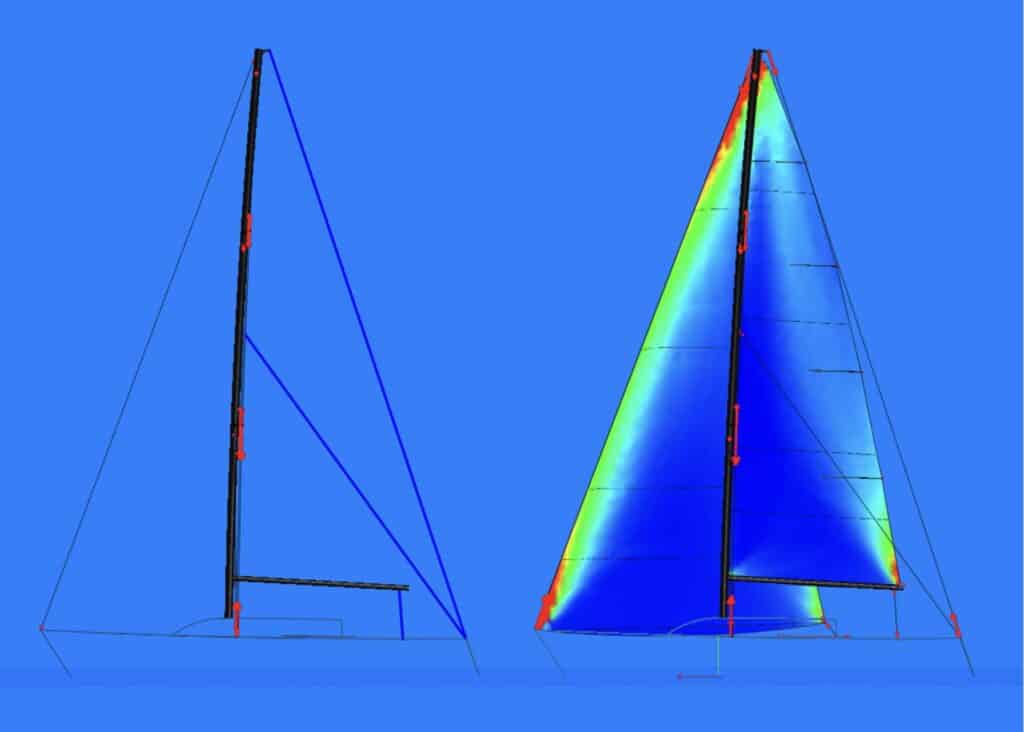
FSI simulation of rig tuning for the J/35. Red arrows indicate stress on the rig.
Next, Pat adjusted the parameters in the design of the sails themselves. It was a time-consuming task but he was able to create a harmonious sail design for a main and headsail that had an increased driving force compared to their 2018 counterparts. The adjusted sail plan had several small tweaks, including moving the draft slightly forward, which will also allow better versatility for other sailing conditions. With these changes, Pat was still able to produce the flat headsail entry that is ideal for the Lake Muskegon conditions, by keeping the jib halyard tension light in the FSI simulation.
With the proposed new sail design complete, FSI was used to simulate the flow and the pressure over the sails at a specified wind angle and wind speed. The new sails were also rendered with battens, draft stripes and reinforcements for a realistic visualization of their final form.
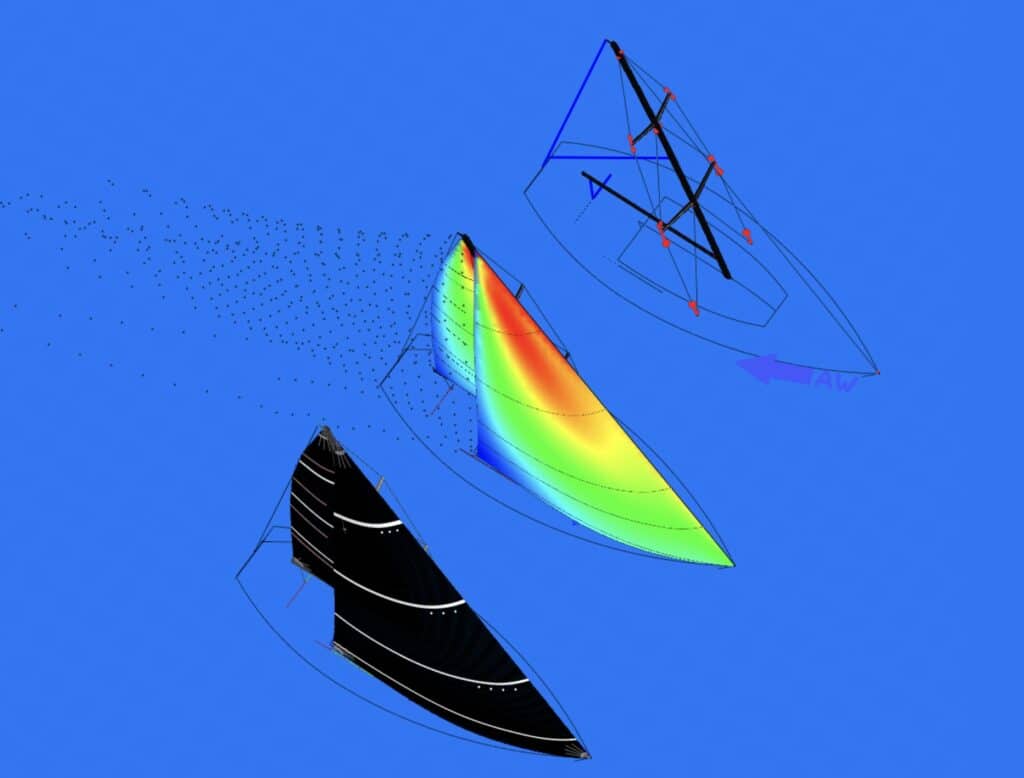
Side-by-side renderings of the rig tuning, pressure map and sail details.
To accurately display the pressure map, many variables are input into FSI to represent cable loads (expressed in in Newtons) and elongations of the stays and sail controls. These fine adjustments allow for accurate representations of how a boat is tuned and its sails are trimmed in real life and unique configurations such as the extra backstay tension on BAD DOG can be recreated in the digital model.
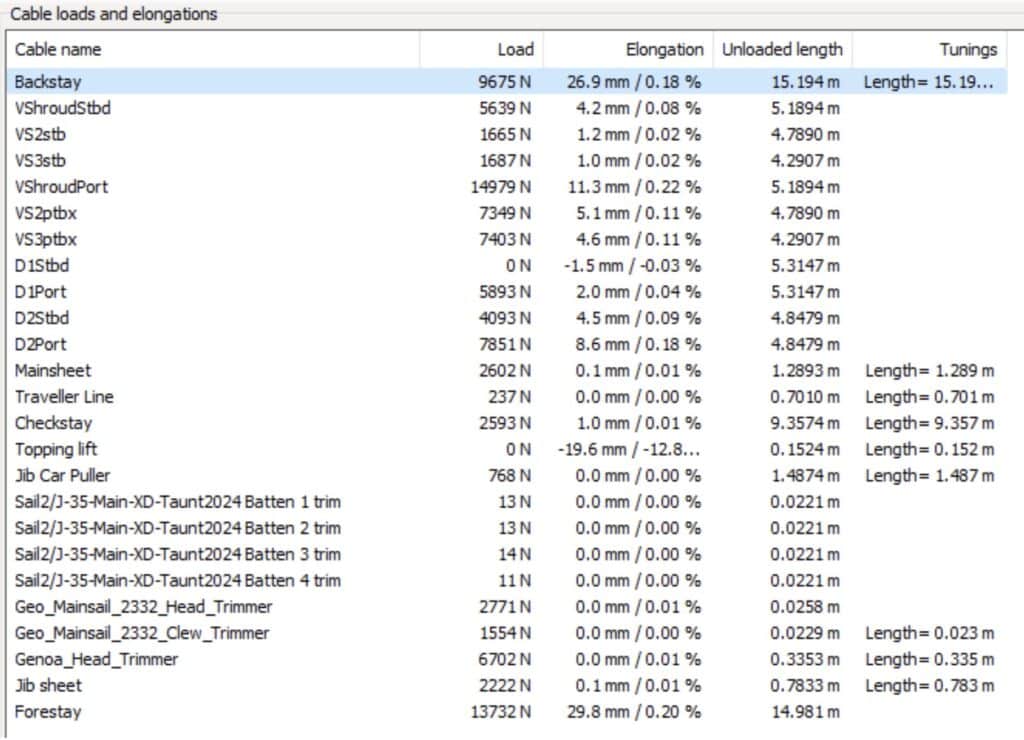
Cable loads and elongations used for the BAD DOG FSI simulation.
The objective for this thorough FSI analysis was to improve the performance of the next generation of BAD DOG sails. Pat said, “The important thing to remember is that they’re not always going to be sailing on Lake Muskegon with flat water, so I had to make sure we still had sails that could be adaptable for a variety of different conditions. I didn’t want to make the sails totally flat in the front end and too far draft aft, because when they do get into waves for events like the Race to Mackinac, they wouldn’t have enough power.”
“For eight knots of wind and flat water, sailing a J/35 the way that they did really works. In those conditions, cranking on the backstay and trimming the main really hard, helps to drive the boat to windward.” Pat said, “It’s okay for boat speed to be a little bit below targets because the big keel on the boat is preventing slippage sideways and those few degrees of height can make a huge difference.” Good sailors are able to adapt to their venue and sailing conditions to make their boat go fast and the BAD DOG team are a great example of this.

